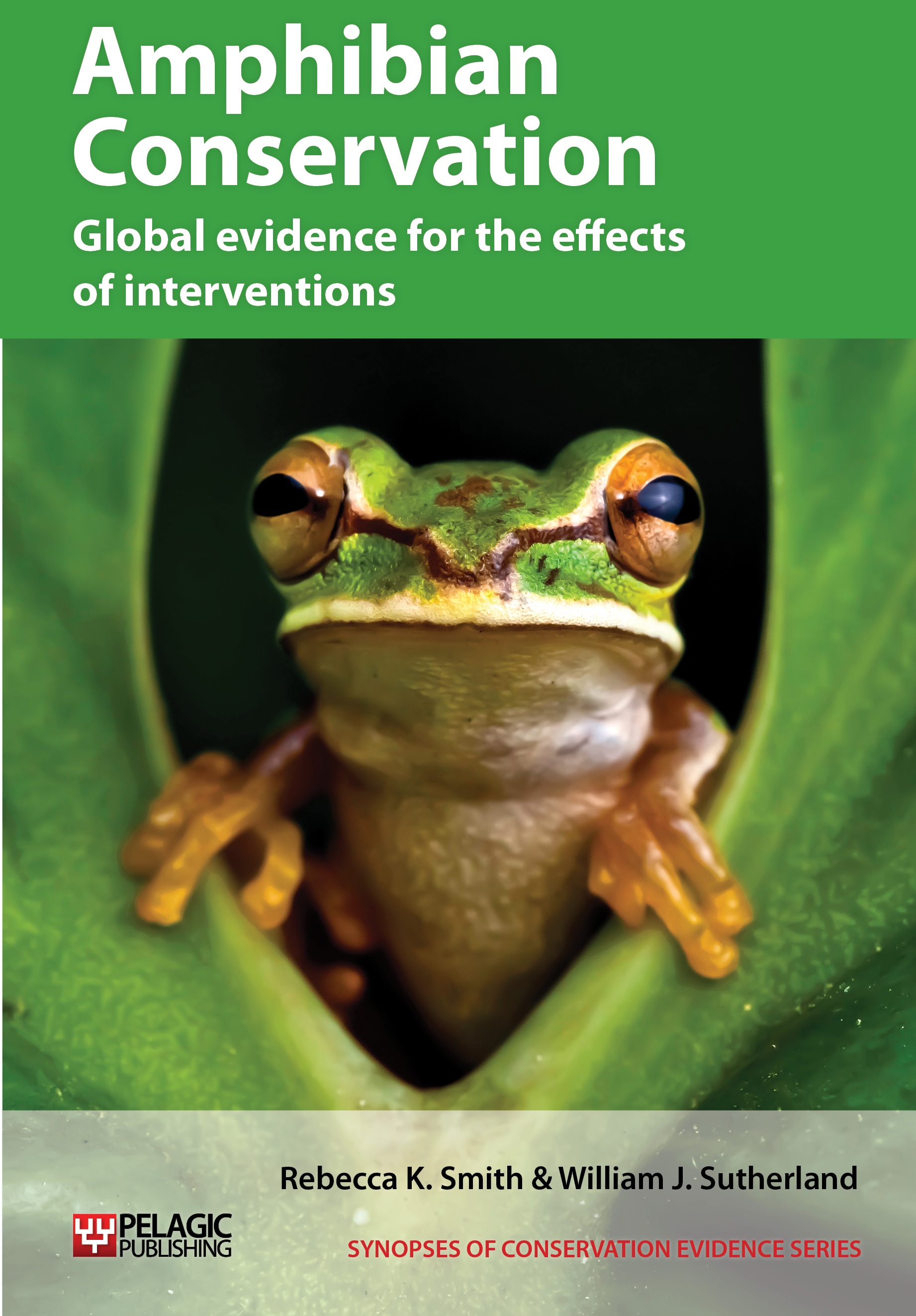Create ponds for salamanders (including newts)
-
Overall effectiveness category Beneficial
-
Number of studies: 5
View assessment score
Hide assessment score
How is the evidence assessed?
-
Effectiveness
70% -
Certainty
65% -
Harms
0%
Study locations
Supporting evidence from individual studies
A replicated, before-and-after study in 1992–1995 of five created ponds in meadows near Lyon, France (Joly & Grolet 1996) found that alpine newts Triturus alpestris established a stable breeding population in one of five ponds over the first three years. Breeding occurred in three ponds in 1–3 years (3–38 larvae/pond). All ponds were used by newts in the first year, although four ponds only had 2–7 animals, the fifth had 40 newts. First year colonizers were biased towards males (38 vs 15) and tended to be 1–2 years old. By the third year one pond was used by 176 newts, two by 3–6 and two by zero newts. Colonization failed in the two ponds that were colonized by fish, although two of three fish species disappeared within a year. Five ponds were excavated in September 1992. Each was 12 x 5 m and 1.5 m deep with sloping banks. Newts were sampled by netting once a month in March-June 1993–1995. Animals were aged and tagged.
Study and other actions testedA before-and-after study in 1974–1995 of seven created forest ponds in Missouri, USA (Sexton et al.1998) found that translocated spotted salamanders Ambystoma maculatum established breeding populations in five ponds. Numbers of salamander captures increased from 428 in 1974 to 2,301 in 1995 at the release pond. Salamanders also colonized four additional created ponds (0.9–2.4 km). In 1966, spotted salamander egg masses were translocated 1 km to a newly constructed pond. Another six ponds were constructed at the site in 1965–1979. Monitoring was undertaken using drift-fencing with pitfall traps around ponds and by egg mass counts.
Study and other actions testedA small, replicated, before-and-after study in 1997–2001 of two ponds created within the range of one of three known populations of the Chinhai salamander Echinotriton chinhaiensis in Zhejiang, China (Sparreboom, Feng & Liang 2001) found the species breeding in the ponds within two years. By 2001, females and five clutches of eggs were found. By that time, pond banks were 75% covered by vegetation and shrubs were developing. Numbers of female salamanders counted in the area were variable, but similar before (1997: 50; 1998: 88) and after pond construction (1999: 89; 2000: 82; 2001: 58 in 2001). Two or three males were found in 1997–1999, one in 2000 and none in 2001. Two species of frog (Hylarana latouchii and Microhyla mixture) colonized in the year of construction. In June 1999, ponds were dug 50 m from two existing breeding habitats, within a similar environment. Ponds were 3 x 2 m and 0.4 m deep. Amphibians were monitored from 1997–2001.
Study and other actions testedA small, replicated, before-and-after study in 1995–2000 of two created ponds in agricultural land and a reserve in Ohio, USA (Weyrauch & Amon 2002) found that translocated spotted salamanders Ambystoma maculatum, but not tiger salamanders Ambystoma tigrinum reproduced in created ponds. Four adult spotted salamanders and one egg mass were found in one pond in 1997 and three egg masses in the other pond in 2000. Both ponds produced metamorphs in 1996–1998. Tiger salamanders were not recorded following translocation. Ponds were created in 1995–1997 and were 2–4 m deep. Water, vegetation, plankton and organic matter (from local wetlands) were added. Spotted salamander eggs (600–1100), larvae (40–850) and metamorphs (4–33) and tiger salamander metamorphs (0–25) were added in spring 1996–1998 and 2000. Amphibians were monitored using drift-fencing and pitfall traps around ponds and by dip-netting and egg counts.
Study and other actions testedA replicated, before-and-after study in 1994–2004 of 14 created ponds in wet meadows in the Luhe valley, Germany (Kinne 2004) found that captive-bred smooth newts Triturus vulgaris established stable breeding populations in nine ponds. Fourteen ponds and many small ponds of different designs were created. Some aquatic plants were introduced. Management also included fish removal, hanging wildfowl deterrents, mowing, scrub clearance and creation of hibernacula. From 1994, 90 smooth newts were released into two created ponds annually. In 2000–2004, 5–10 adults were also released into the two ponds.
Study and other actions tested
Where has this evidence come from?
List of journals searched by synopsis
All the journals searched for all synopses
This Action forms part of the Action Synopsis:
Amphibian Conservation
Amphibian Conservation - Published 2014
Amphibian Synopsis





)_2023.JPG)














